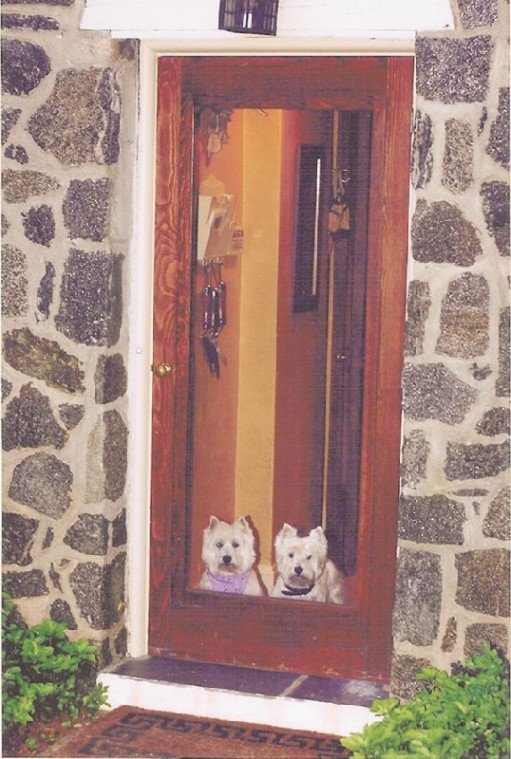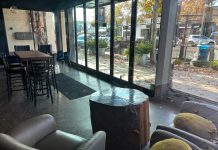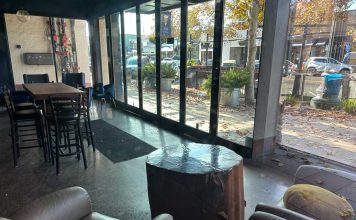Whether during the holidays or throughout the year, I believe
our homes are the places we want to be.
After all, our home speaks volumes about us: our passions,
collections, pastimes and pleasures
Whether during the holidays or throughout the year, I believe our homes are the places we want to be.
After all, our home speaks volumes about us: our passions, collections, pastimes and pleasures. It also is the place where we feel the most comfortable and relaxed, where we love to entertain family and friends, where we keep our favorite things.
But our havens are also the places where we should feel the most safe — secure in the knowledge that our family, home and possessions are protected from intruders, accidents, carbon monoxide and fire — and that our homes are also safe for little people and elderly, free of hazards that could cause accident or injury.
Here are some important safety considerations for your home, to help make sure you and your loved ones are not only comfortable but safe in your havens as well.
To Foil a Thief
The National Crime Prevention Institute (NCPI) offers this statistic: Burglars will usually work no longer than 60 seconds to gain entry. That means, the longer you can keep them at bay, the greater the chance that they’ll give up and go away.
Make your barriers secure by always
1. Locking doors and windows. Doesn’t everybody? Not according to the NCPI which says that 89 percent of residential burglaries are through unlocked doors or windows.
2. Make sure door locks are adequate with dead bolts that extend at least 1 inch.
3. Install motion-detector lights around your property and keep shrubbery low — the old, “no place to hide” strategy.
4. Get a dog. We did.
5. Stay alert and never let anyone into your home unless you’re completely comfortable with him or her.
6. Ask your neighbors to keep “an eye out” when you’re away.
7. Don’t hide your key in your mailbox, under the mat or above the door frame — outsmart the would-be-intruder by never leaving keys, cash or valuables in obvious places. The longer thieves have to search, the greater the chance they’ll just give up.
8. They’re not for everyone, but if they’ll make you feel the most secure, install an alarm or a camera at the door.
Carbon monoxide: the silent killer
A byproduct of combustion, carbon monoxide is present whenever fuel burns, so it can be a hazard in any home with a gas or oil furnace, water or space heater, oven, clothes dryer or wood-burning stove.
The Consumer Product Safety Commission (CPSC) recommends: yearly heating system check-ups, installation of a CO detector, and if the alarm sounds and anyone in your family is experiencing symptoms of CO poisoning such as headaches or nausea, call your local emergency number or Fire Department and evacuate the premises and don’t re-enter until the house has been deemed safe.
Fire Protection
According to John Viniello, president of the National Fire Sprinkler Association, more and more residential homebuilders are installing sprinkler systems (they’re not just for public spaces any more) and in many cities, ordinances are making them mandatory.
“When you’re building a home, for about the same price as a carpet upgrade you can install a sprinkler system,” says Viniello. “The added cost is about $1-$1.50 per square foot.”
Check out their Web site, www.nfsa.org for a list of certified residential sprinkler installers in your state.
If you’re not ready for a sprinkler system, install a smoke detector, the minimum requirement to help alert household members before they become trapped or overcome by smoke.
And the next essential step is to plan with your family what each is to do in the event that the alarm sounds.
Draw up an escape route that every member of the family understands — discuss the details, alternate routes, windows, porches, and rooftop evacuations, and have window ladders handy, then plan a meeting place for when everyone gets outside.
And make sure that your family knows that if there is a real fire, there are certain precautions to follow such as closing doors behind you as you make your exit, and if you’re trapped to stuff towels, sheets or rugs around the top and bottom of the door to keep smoke out.
Baby Steps
Take a close look at your home from a child’s perspective and consider all potential hazards — objects that can go in a mouth, sharp corners, steep staircases, exposed electrical outlets, lamp cords, unlatched cabinets, poisonous plants, top-heavy shelves. Address the problems before having toddlers in your home.
Try to think one step ahead of your little one or young visitors – no easy task – and use common sense: Remove dry cleaning bags immediately, keep all chemicals, cleaning supplies and medicines locked up, put away the potpourri, install a bath mat and spout guard in the bathtub.
And remember, nothing takes the place of close adult supervision in the home.
First-Aid Kit at the Ready
Keep a first-aid kit handy; a kitchen drawer is usually a convenient spot, and be sure every family member knows the location and how to use the products within it.
A first-aid instruction booklet should be included in the kit.
Be sure to replenish supplies as you use them.
Remember, that list of doctors, emergency numbers, and family members should be posted by all phones in the house.
Turning your home into your haven means that when you are at home, you should feel complete peace of mind.
Your home is comfortable, cozy, warm, as well as safe and secure.
No wonder there’s no other place you’d rather be!














